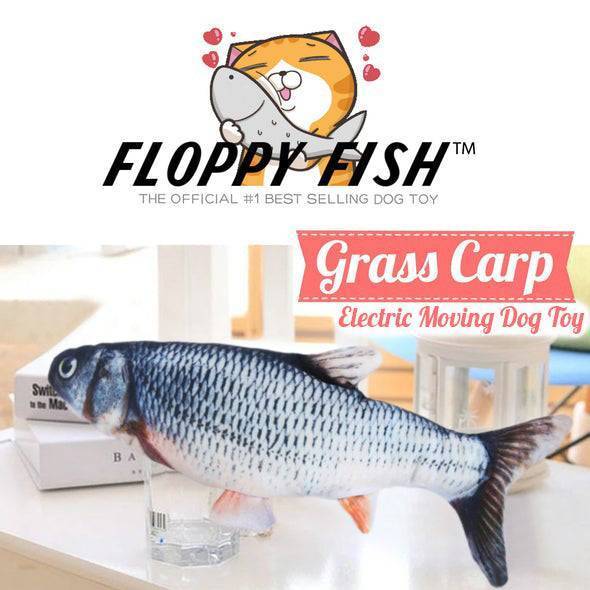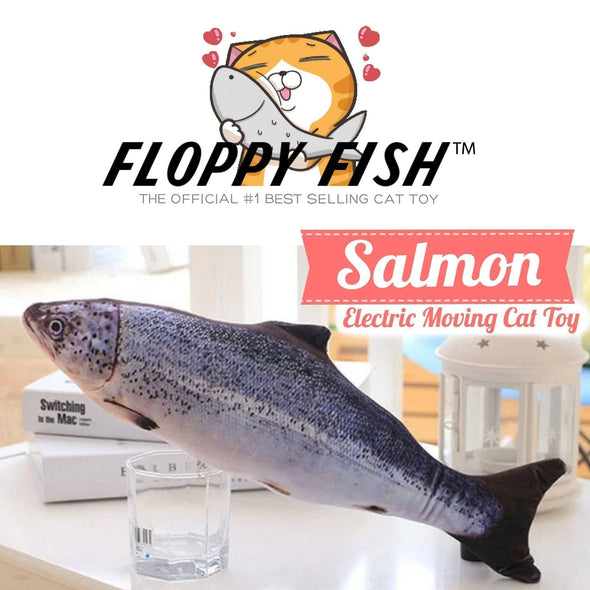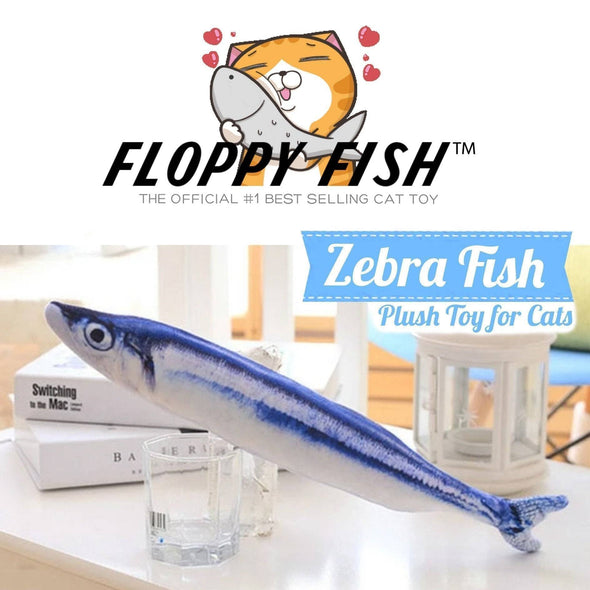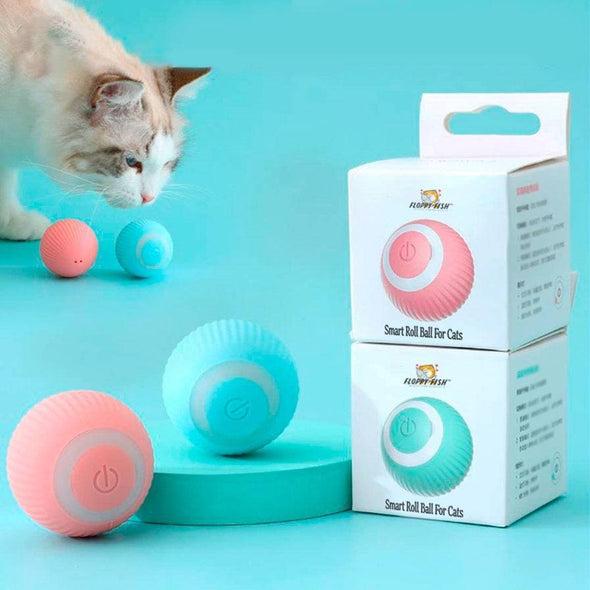Flying Cat Toys That Actually Work: The Complete Guide to Motion-Activated Entertainment
Indoor cats face a unique challenge that outdoor cats never encounter: the lack of natural prey simulation. While traditional cat toys might entertain for a few minutes, flying cat toys represent a revolutionary approach to feline entertainment that taps into your pet's deepest hunting instincts.

What Makes Flying Cat Toys Different from Regular Interactive Toys?
Flying cat toys aren't your typical feather wands or laser pointers. These innovative devices use motion-activated technology to create lifelike movements that simulate birds in flight – right on your living room floor. Unlike static toys that require constant human interaction, these smart toys respond independently to your cat's touch and movements.
The magic happens through sophisticated sensors that detect when your cat approaches or pats the toy. This triggers realistic flapping wing movements and authentic chirping sounds that create an irresistible hunting scenario. It's like bringing the excitement of outdoor bird watching directly into your home.
Traditional interactive toys often lose their appeal quickly, but flying cat toys maintain long-term engagement because they respond differently each time your cat plays. This unpredictability mirrors the natural hunting experience cats crave.
How Do Motion-Activated Flying Toys Actually Work?
The technology behind flying cat toys combines several innovative features to create authentic prey simulation. Smart motion sensors are the heart of these devices, detecting the slightest touch or movement from your cat. Once activated, internal mechanisms create wing movements that flutter and flap just like real birds.
Most quality flying cat toys include realistic chirping sounds that complement the visual movement. These audio elements are crucial because cats rely heavily on sound when hunting. The combination of movement and sound creates a multi-sensory experience that captivates even the most disinterested indoor cats.
The toys typically enter standby mode after periods of inactivity, preserving battery life while remaining ready to spring into action the moment your cat shows interest. This automatic cycling keeps the experience fresh and prevents overstimulation.
Modern flying cat toys are USB rechargeable, eliminating the need for constant battery replacement. A single charge often provides several days of interactive play, making them both economical and environmentally friendly.

Why Indoor Cats Need Flying Toys for Mental Stimulation
Indoor cats miss out on natural hunting opportunities that outdoor cats experience daily. This deprivation can lead to behavioral problems, weight gain, and depression. Flying cat toys address these issues by providing essential mental and physical stimulation that indoor environments often lack.
The American Veterinary Medical Association emphasizes the importance of environmental enrichment for indoor cats. Flying toys excel in this area because they engage multiple senses simultaneously while encouraging natural hunting behaviors.
Cats who regularly interact with motion-activated toys experience reduced anxiety and demonstrate more balanced energy levels throughout the day. The physical activity involved in stalking, pouncing, and batting at flying toys helps maintain healthy weight and muscle tone.
Mental stimulation is equally important. Flying cat toys challenge your pet's problem-solving abilities as they learn to predict and respond to the toy's movements. This cognitive engagement helps prevent boredom-related destructive behaviors like excessive scratching or inappropriate elimination.

Flying Toys vs Traditional Cat Entertainment: A Complete Comparison
Traditional cat toys serve their purpose, but flying cat toys offer distinct advantages that make them superior for long-term entertainment. Laser pointers provide great exercise but can frustrate cats because they never catch tangible prey. Flying toys allow cats to physically capture and interact with their "prey," providing satisfying completion to their hunting sequence.
Feather wands require constant human participation, making them impractical for busy pet owners or when cats need independent entertainment. Flying cat toys operate autonomously, providing engagement even when you're away from home.
Static toys like stuffed mice or balls quickly lose their novelty because they lack unpredictable movement. Flying toys maintain interest through variable response patterns that keep cats guessing and engaged.
Interactive puzzle feeders focus primarily on food motivation, while flying toys tap into deeper hunting instincts. Both serve important roles, but flying toys address the specific need for prey simulation that food puzzles cannot satisfy.
Electronic toys that move in predictable patterns become boring once cats learn the sequence. Quality flying cat toys incorporate randomized movement patterns that prevent this predictability problem.
Are Flying Cat Toys Safe for All Cat Personalities?
Flying cat toys work well for most cats, but individual personalities do influence success rates. Bold, confident cats typically embrace these toys immediately, showing intense stalking and pouncing behaviors. Timid cats might need gradual introduction but often become enthusiastic users once they overcome initial hesitation.
Senior cats benefit tremendously from flying toys because the motion-activated feature means they don't need to exert excessive energy to trigger play. The toy responds to gentle touches, making it perfect for cats with arthritis or mobility limitations.
Highly energetic cats find flying toys particularly satisfying because they provide both mental and physical challenges. These toys help channel excess energy into appropriate play rather than destructive behaviors.
Even lazy cats often respond to flying toys when other entertainment fails. The realistic movements and sounds can awaken dormant hunting instincts in cats who seem uninterested in traditional toys.
Safety considerations include choosing toys with durable, bite-resistant materials and ensuring all electronic components remain securely enclosed. Quality flying cat toys undergo rigorous safety testing to prevent any harm during enthusiastic play sessions.

What to Look for When Choosing Flying Cat Toys
Not all flying cat toys offer the same quality or features. Realistic movement patterns should be your top priority – look for toys that create varied, unpredictable motions rather than repetitive mechanical movements. The best flying toys incorporate multiple movement types like fluttering, flapping, and brief pauses that mimic real bird behavior.
Sound quality matters significantly in flying toys for cats. Authentic chirping sounds should be clear but not overwhelming. Some cats prefer softer sounds, while others respond better to more pronounced audio effects. Adjustable volume controls offer flexibility for different preferences and household situations.
Battery life and charging convenience affect long-term satisfaction with flying cat toys. USB rechargeable options prove more economical and environmentally responsible than battery-operated alternatives. Look for toys offering at least 2-3 days of play time per charge.
Durability becomes crucial for enthusiastic hunters who attack their flying toys vigorously. Bite-resistant materials and reinforced construction ensure your investment withstands normal play behavior. Removable, washable covers add practical value for maintaining hygiene.
Size considerations matter for both storage and play effectiveness. Flying toys should be large enough to create impressive visual impact but small enough for easy batting and carrying. Most cats respond best to toys sized similarly to their natural prey.
The Science Behind Why Cats Love Flying Motion Toys
Feline hunting behavior follows predictable patterns that flying cat toys exploit perfectly. The predatory sequence includes stalking, chasing, pouncing, catching, and playing with prey. Traditional toys often interrupt this sequence, but flying toys allow cats to complete the entire cycle naturally.
Research published in Applied Animal Behaviour Science demonstrates that cats show increased satisfaction and reduced stress when they can complete full hunting sequences. Flying toys facilitate this completion by providing tangible targets that cats can successfully capture and manipulate.
Visual triggers play a crucial role in feline prey response. Cats are naturally drawn to small objects that move unpredictably at ground level – exactly what quality flying cat toys simulate. The combination of size, movement speed, and erratic patterns triggers deep-seated hunting instincts.
Auditory stimulation enhances the hunting experience significantly. Cats use sound to locate and track prey, so realistic chirping sounds make flying toys more convincing and engaging. The audio-visual combination creates immersive experiences that captivate cats far longer than silent toys.
The intermittent reinforcement provided by motion-activated flying cat toys keeps cats engaged through variable reward schedules. This psychological principle explains why flying toys maintain interest better than predictable alternatives.
Flying Cat Toys for Different Household Situations
Multi-cat households benefit enormously from flying cat toys because they provide entertainment without requiring resource competition. Unlike food-based enrichment, flying toys can engage multiple cats simultaneously without creating territorial disputes.
Single-cat homes find flying toys particularly valuable for combating loneliness and boredom when owners are absent. The independent operation allows cats to self-entertain, reducing separation anxiety and preventing destructive behaviors.
Apartment living presents unique challenges for cat entertainment, but flying toys excel in small spaces. They don't require large areas for effective play and won't disturb neighbors with excessive noise. The contained movement keeps play within designated areas.
Homes with young children benefit from flying cat toys because they reduce cats' desire to play inappropriately with human family members. When cats have satisfying toy interactions, they're less likely to use hands and feet as play targets.
Senior pet owners appreciate flying toys because they require minimal physical involvement while providing maximum entertainment value. The autonomous operation means these toys continue working even when owners have limited mobility or energy.
Maximizing Your Cat's Flying Toy Experience
Proper introduction techniques help ensure flying toy success with any cat. Start with short play sessions to prevent overstimulation while allowing cats to become familiar with the toy's movements and sounds. Gradually increase session length as comfort levels improve.
Strategic placement enhances flying toy effectiveness. Position toys in areas where cats naturally spend time, such as favorite sunny spots or traffic paths between rooms. Avoid placing them near food bowls or litter boxes, which can create negative associations.
Rotation strategies prevent flying toy boredom even with the most engaging devices. Store toys for several days between use periods to maintain novelty. When reintroduced, cats often show renewed enthusiasm for previously familiar toys.
Combining flying toys with other enrichment activities creates comprehensive entertainment programs. Use flying toys for active play periods, then transition to puzzle feeders or quiet toys for calmer activities. This variety prevents over-reliance on any single entertainment source.
Maintenance routines ensure flying toys continue operating effectively. Regular cleaning removes accumulated hair and debris that can interfere with sensors or motors. Following manufacturer charging recommendations preserves battery life and prevents operational problems.

Conclusion: Transform Your Cat's Daily Entertainment
Flying cat toys represent a significant advancement in feline entertainment technology. They address the fundamental need for prey simulation that indoor cats desperately miss while providing convenient, long-lasting engagement for busy pet owners.
The investment in quality flying cat toys pays dividends through improved cat behavior, better physical fitness, and enhanced mental stimulation. When cats have appropriate outlets for their hunting instincts, they become more balanced, content, and well-behaved family members.
Ready to revolutionize your cat's playtime? Explore our complete collection of interactive cat toys or discover why thousands of cat owners choose the FLOPPY FISH™ Flying Bird Cat Toy for their feline companions. Transform your indoor cat's daily routine with motion-activated entertainment that actually works.
Don't wait – your cat's perfect hunting experience is just one click away!




